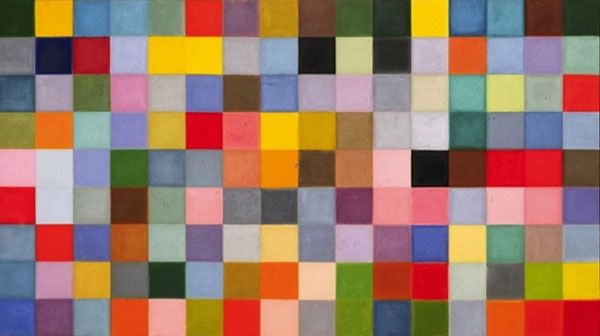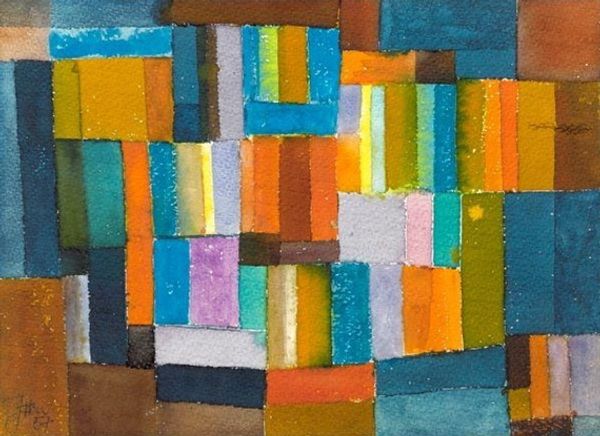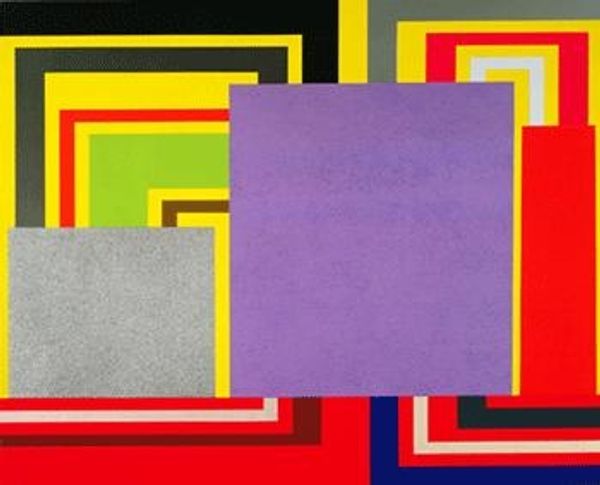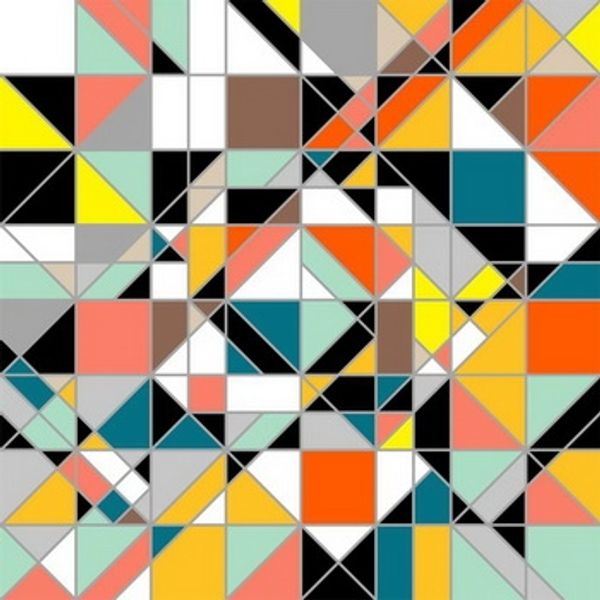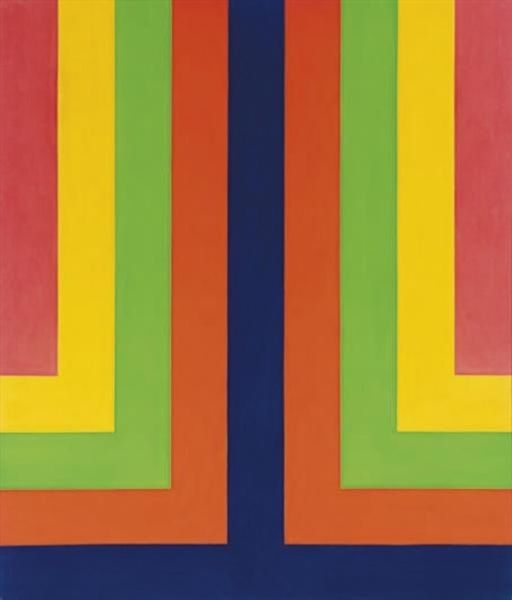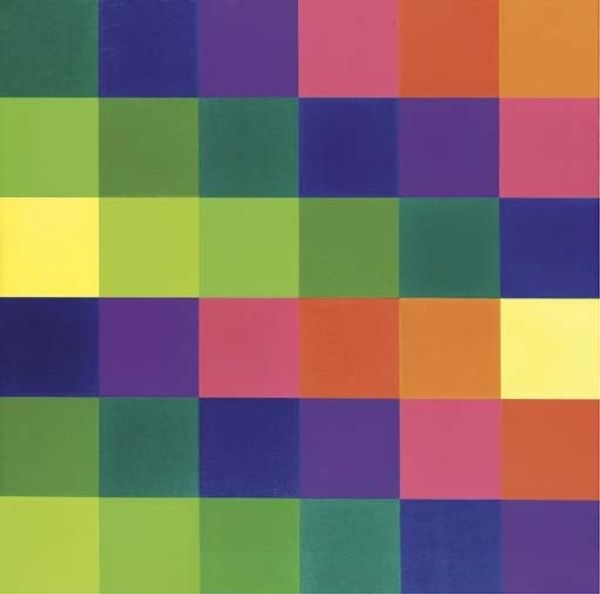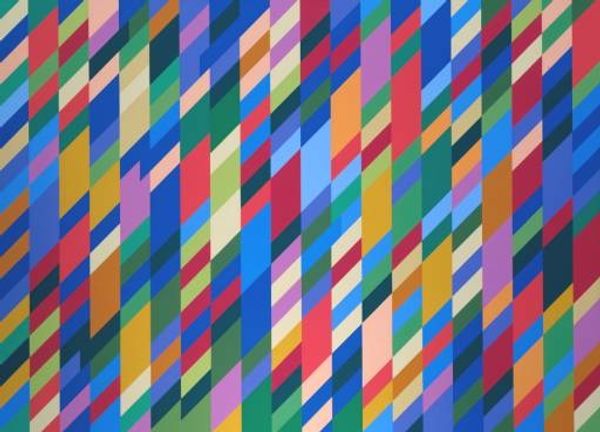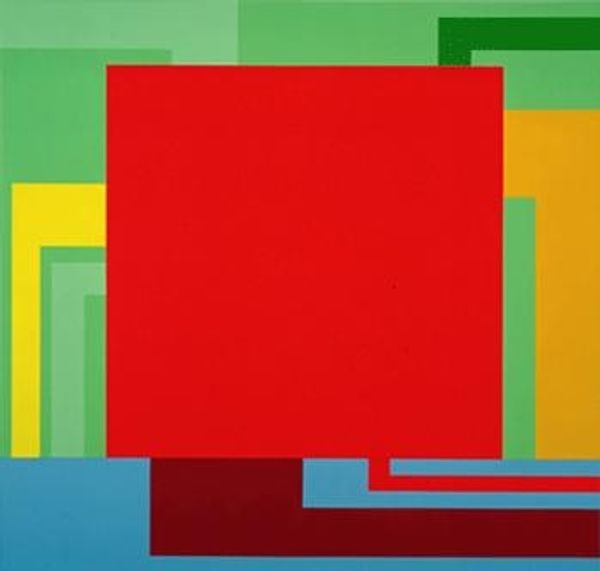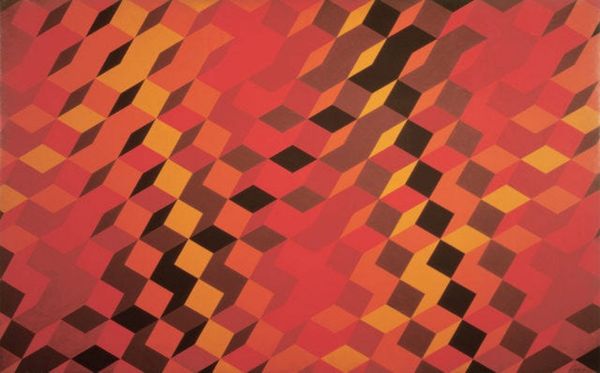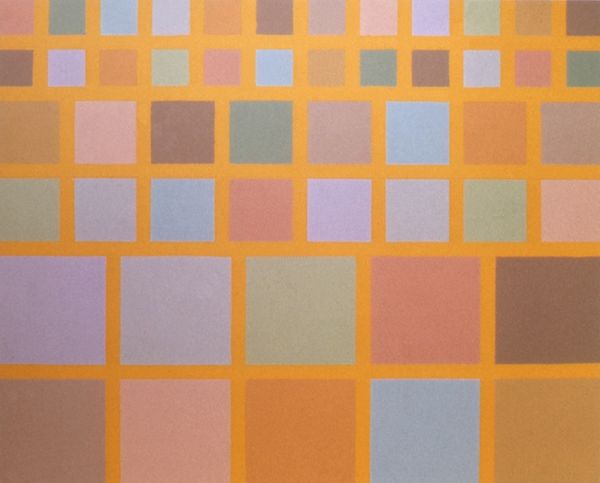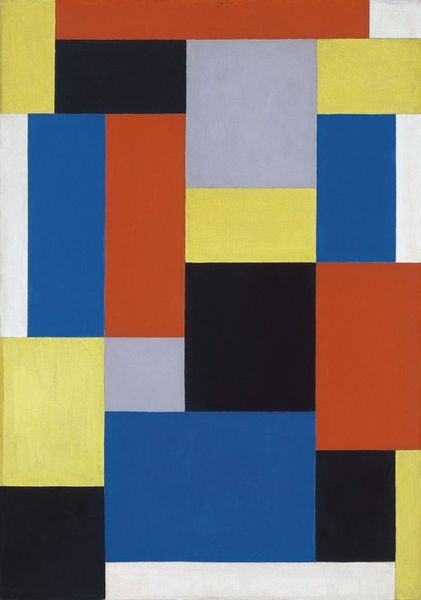
Copyright: Piero Dorazio,Fair Use
Curator: Piero Dorazio’s “Rosso Perugino” from 1979. What captures your eye? Editor: Immediately, the texture. I’m drawn to the visible brushstrokes and the way the acrylic paint seems almost woven onto the canvas. The red field makes a perfect background to offset these floating rectangles of woven colors. Curator: Texture is certainly key. It seems like an act of controlled freedom. The shapes appear simple but are carefully calculated, typical of his engagement with Hard-edge painting. I wonder, what does that color – that dominant, “Perugino” red – evoke in you? Editor: It's energetic! It doesn’t recede into the background; it vibrates, demanding equal attention with the blocks of color. Looking at the way Dorazio applied the paint—you can see this labor in his technique, this almost rhythmic action of building these shapes. Curator: Absolutely. This red resonates. Consider Perugino himself, how his own favored "rosso" carried connotations of spirituality and intensity, often used to depict divine garments. Here, the geometry might become like an abstract iconography. What narratives, if any, do you think emerge? Editor: For me, this almost grid-like structure references textiles, specifically tapestries. The pattern gives it a human touch – perhaps less divine, but pointing toward its status as an object, created and consumed. There is an argument to be made for consumer culture. Curator: Interesting, the connection to textiles. These patterns, despite their modern leaning, perhaps carry whispers of older traditions, a continuity in human expression? Editor: Perhaps a subconscious echo. Ultimately, though, it’s a testament to process. Dorazio manipulated his chosen materials of canvas and acrylic to construct a surface and generate aesthetic affect. That action itself becomes content. Curator: Well said. It feels apt to consider the layered nature of interpretation. Editor: A pleasure, as always, looking deeper at what appears at first to only exist at the surface.
Comments
No comments
Be the first to comment and join the conversation on the ultimate creative platform.
